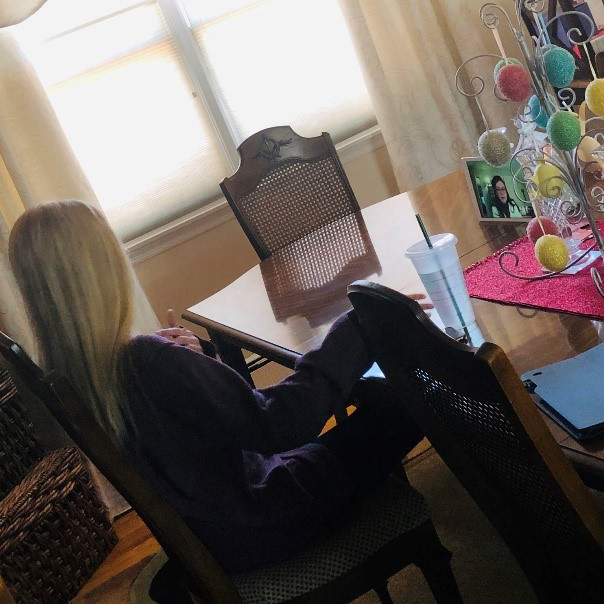Passaic Valley Embraces Remote Learning Model
![]()
Olivia Manfredo '20
8 May 2020
On March 16, students and teachers began the transition to remote learning, in following the proper safety precautions of social distancing. Teachers have been working harder than ever to ensure students are continuing to succeed academically, even when not in the traditional classroom setting.
Passaic Valley teachers and administrators had been planning for the possibility of school closures in response to the Coronavirus before March 16. Therefore, PV was well-equipped when Governor Murphy declared that schools would be closed and moving to online learning. 
Despite the preparation, the transition was still difficult for many. However, as the days and weeks have gone on, both teachers and students have found it running smoothly and effectively. “I'm really trying to structure our online learning just as I would run my classes. So I'm making sure we hit all the objectives and skills we normally would in person, but now I'm coming up with creative ways to deliver that instruction online,” said AP/Honors English Teacher Mrs. Jaime Picarelli.
One of the major disadvantages of remote learning is the removal of in-person interaction. In order to continue some type of face to face learning, some teachers have set up Google Hangouts and Zoom calls with their classes to simulate authentic classroom experiences. “It makes me so happy to be able to see my students and hear their voices!” added Mrs. Picarelli.
Despite difficulties, students have been determined to make the model work, showing up each day to continue their academic careers. This is reflected in Passaic Valley’s improved attendance records. “Attendance is actually better,” said Assistant Principal of Humanities Dr. Jared Fowler. “As far as performance, I see a lot of work being done and some innovative work from both teachers and students”.
For many students, the use of familiar platforms and technologies eased the sudden change. “Since we are all using the Google Classroom platform, I feel like the students are comfortable with completing their assignments with it,” said senior Billy Pinckney.
Teachers are doing their very best to deliver lessons in the most efficient way possible. They record presentations explaining lessons and post assignments that go along with them. Teachers also schedules “office hours”, where they are available to answer any questions a student may have via email or a Google Classroom post. Some teachers also offer the option to meet over Google Hangouts if helps a student understand things better. As expected, teachers are really pouring their hearts into digital learning and are doing everything they can in the students’ best interest.
Of course, no matter how much PV prepared and how seamlessly the transition to online learning went, the closing of school is difficult for many students, particularly those graduating soon. “It is tough as a senior not being able to be in class with my friends and teachers, but I think this situation will teach us to cherish them so much more when we get back to school,” said Patricia Guiriceo.
Hope and optimism are key components for overcoming this unique experience. “I think you have to have a lot of optimism when dealing with remote learning, while also being aware of the barriers that accompany it,” said CITVC/World History Honors Teacher Ms. Kathleen Menake.
This experience has also taught teachers how to teach students in ways they may have never considered. “Teachers are educating as effectively, if not more effectively, because many teachers were asked to step outside their comfort zone and work with technology in a way that they probably never imagined,” explained Dr. Fowler.
It can be a stressful time, yet Passaic Valley is staying strong, and persistent. Eight weeks into digital learning, students and teachers are taking everything a day at a time. “We are so fortunate to have these technologies to maintain that important interactive contact with our students,” said Mrs. Picarelli.
There is a silver lining as digital learning has opened eyes to new possibilities for the future of education. “It's not the best of situations for high school classes, but teachers and students are making the best of the situation under the extraordinary circumstances we face this spring,” added Ms. Menake.

